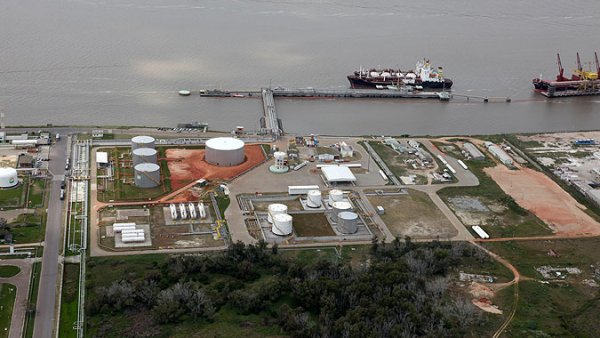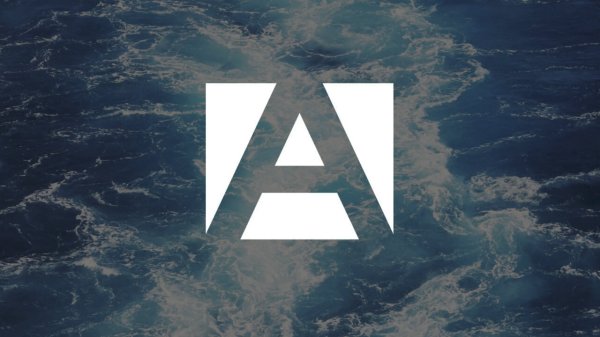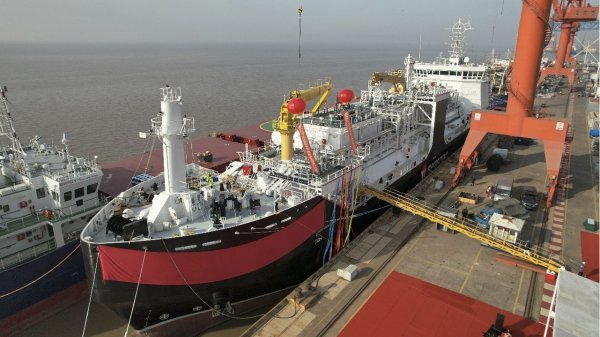0.1 percent survey reveals 'potentially critical issues'
New survey documents fuel segregation, filter choking and fuel pump seizure issues.
A DNV Petroleum Services (DNVPS) survey on the operational impact of the European Union 0.1% marine fuel sulphur limit – enforced on Jan 1 this year – has revealed potentially critical issues.
Among the 65 shipping companies that responded to the survey, 40 percent felt the EU member states were not harmonised in applying regulatory standards when verifying compliance with the 0.1% marine fuel sulphur limit.
According to DNVPS, this lack of uniformity could confuse and dampen the shipping community’s confidence in the ability of the EU to enforce its own environmental regulations.
“DNV had previously expressed concerns that the 0.1% sulphur cap effectively meant ships at berth in the community ports must use marine gas oil, notwithstanding many of the boilers on board would not have been modified by Jan 1 to burn this type of fuel,” said DNVPS managing director Tore Morten Wetterhus.
“Now that more ships are presumably equipped with the installations to minimize gas oil-related risks, such as fuel pump leakage and boiler explosion, shipboard personnel face new worries not knowing what to expect from port state inspections in different EU ports,” added Wetterhus.
Close to 40% of the respondents said their vessels did not have the tank flexibility to segregate gas oil and heavy fuel oil. Another 15% reported filter choking and fuel pump seizures when switching from normal sulphur heavy fuel oil to the much more expensive gas oil on entering the EU community ports.
Surprisingly, almost a third of the respondents did not routinely test the quality of their gas oil purchases, despite the risks of their ships consuming fuels not compliant with the 0.1% fuel sulphur limit.
In the worst case, an untested fuel could be so severely ‘off-specification’ that it causes substantial engine damage and jeopardizes the safety of crew and cargo at sea, DNVPS said.
“As a marine fuel management company, it is especially unsettling for DNVPS to find that some ship operators are gambling with safety when they choose to use gas oil of unknown quality. There must be much more awareness on problems commonly associated with this type of fuel; for instance, low flashpoint and low viscosity,” Wetterhus cautioned.
On a brighter note, he said 90% of the survey respondents believed their crews were familiar with the onboard routines for complying with the EU fuel regulations, but many also felt continuous training would be necessary.
To update the shipping community on marine fuel regulations, related operational challenges, and the latest changes to the ISO 8217 marine fuel specification, DNVPS has been organising seminars and round-table discussions in its key markets. Targeted locations include Singapore, the Netherlands, Norway, Greece, Germany, Dubai, USA and Canada.
More about DNVPS marine fuel seminars and round-table discussions:
May-June 2010 schedule
May 18 Dubai
May 19 Piraeus
May 26 Mahwah
(New Jersey)
May 26 Rotterdam
May 27 Oslo
May 27 Leer (Germany)
May 27 Istanbul
Jun 4 Hamburg
Jun 22 Bergen
Among the 65 shipping companies that responded to the survey, 40 percent felt the EU member states were not harmonised in applying regulatory standards when verifying compliance with the 0.1% marine fuel sulphur limit.
According to DNVPS, this lack of uniformity could confuse and dampen the shipping community’s confidence in the ability of the EU to enforce its own environmental regulations.
“DNV had previously expressed concerns that the 0.1% sulphur cap effectively meant ships at berth in the community ports must use marine gas oil, notwithstanding many of the boilers on board would not have been modified by Jan 1 to burn this type of fuel,” said DNVPS managing director Tore Morten Wetterhus.
“Now that more ships are presumably equipped with the installations to minimize gas oil-related risks, such as fuel pump leakage and boiler explosion, shipboard personnel face new worries not knowing what to expect from port state inspections in different EU ports,” added Wetterhus.
Close to 40% of the respondents said their vessels did not have the tank flexibility to segregate gas oil and heavy fuel oil. Another 15% reported filter choking and fuel pump seizures when switching from normal sulphur heavy fuel oil to the much more expensive gas oil on entering the EU community ports.
Surprisingly, almost a third of the respondents did not routinely test the quality of their gas oil purchases, despite the risks of their ships consuming fuels not compliant with the 0.1% fuel sulphur limit.
In the worst case, an untested fuel could be so severely ‘off-specification’ that it causes substantial engine damage and jeopardizes the safety of crew and cargo at sea, DNVPS said.
“As a marine fuel management company, it is especially unsettling for DNVPS to find that some ship operators are gambling with safety when they choose to use gas oil of unknown quality. There must be much more awareness on problems commonly associated with this type of fuel; for instance, low flashpoint and low viscosity,” Wetterhus cautioned.
On a brighter note, he said 90% of the survey respondents believed their crews were familiar with the onboard routines for complying with the EU fuel regulations, but many also felt continuous training would be necessary.
To update the shipping community on marine fuel regulations, related operational challenges, and the latest changes to the ISO 8217 marine fuel specification, DNVPS has been organising seminars and round-table discussions in its key markets. Targeted locations include Singapore, the Netherlands, Norway, Greece, Germany, Dubai, USA and Canada.
More about DNVPS marine fuel seminars and round-table discussions:
May-June 2010 schedule
May 18 Dubai
May 19 Piraeus
May 26 Mahwah
(New Jersey)
May 26 Rotterdam
May 27 Oslo
May 27 Leer (Germany)
May 27 Istanbul
Jun 4 Hamburg
Jun 22 Bergen

|
IMO approves pricing mechanism based on GHG intensity thresholds
Charges to be levied on ships that do not meet yearly GHG fuel intensity reduction targets. |
|
|
|
||

|
VARO Energy expands renewable portfolio with Preem acquisition
All-cash transaction expected to complete in the latter half of 2025. |
|
|
|
||

|
NYK trials biofuel in milestone coal carrier test
Vessel is used to test biofuel for domestic utility company. |
|
|
|
||

|
H-Line Shipping orders LNG bunkering vessel
Vessel with 18,000-cbm capacity to run on both LNG and MDO. |
|
|
|
||

|
How to engineer and manage green shipping fuels | Stanley George, VPS
Effective management strategies and insights for evolving fuel use. |
|
|
|
||

|
Swedish government bans scrubber wastewater discharges
Discharges from open-loop scrubbers to be prohibited in Swedish waters from July 2025. |
|
|
|
||

|
MAN Energy Solutions achieves 100% load milestone for ammonia engine
Latest tests validate fuel injection system throughout the entire load curve. |
|
|
|
||

|
Petrobras secures ISCC EU RED certification for B24 biofuel blend at Rio Grande
Blend consisting of 24% FAME is said to have been rigorously tested to meet international standards. |
|
|
|
||

|
Stolt-Nielsen to fully control Avenir LNG with acquisition
Share purchase agreement to buy all shares from Golar LNG and Aequitas. |
|
|
|
||

|
Bureau Veritas supports launch of CIMC SOE's LNG bunkering vessel
Handover of Seaspan Energy's cutting-edge 7,600-cbm vessel completed. |
|
|
|
||
Related Links
- · Container ship concept to burn less fuel [Insights]
- · DNV certifies first SOx exhaust gas scrubber [Insights]
- · DNV releases guide to reducing ship emissions [Insights]
- · DNV releases guide to reducing emissions [Insights]

